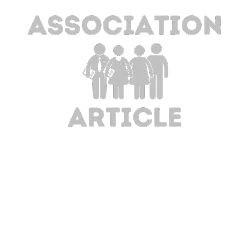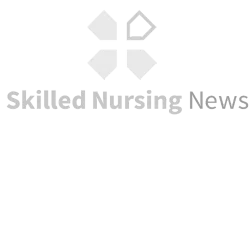News digest: CMS releases updated rules

Prepare Now: New SNF VBP Measures will Determine Future Medicare Reimbursements
New CMS skilled nursing facility value based purchasing (SNF VBP) measures take effect October 1, 2023 that will determine Medicare Part A rates beginning October 1, 2025. It is imperative that administrators, DONs, finance, QAPI and operations leaders be familiar with these new measures and understand how they will impact future reimbursement rates.
SNF VBP Essentials is a one-hour course that details the new CMS measures and discusses how CMS calculates VBP measures, risk adjustment, facility score and payment adjustments. The course provides instructions on using a SNF VBP prediction calculator tool (included with the course) that helps estimate the financial impact the measures will have on a nursing facility’s Medicare Part A revenue.
The training delves into the existing all-cause hospital readmission measure and the three new measures to be counted this October 1. Also covered are the four additional measures CMS will incorporate into SNF VBP calculations effective October 1, 2024.
This means SNF VBP is expanding from one measure to eight measures over two years. Adopting best practices now to prepare for these new measures will help avoid Part A payment penalties and potentially boost future incentive payments.
Kyllo, Dave. Prepare Now: New SNF VBP Measures Will Determine Future Medicare Reimbursements. www.ahcancal.org/News-and-Communications/Blog/Pages/Prepare-Now-New-SNF-VBP-Measures-will-Determine-Future-Medicare-Reimbursements.aspx.

UPDATED: CMS finalizes 4 percent pay raise, keeps contested turnover measure
Nursing homes will get a higher-than-expected 4.0% increase in their Medicare Part A payments in fiscal 2024, per a finalized Centers for Medicare & Medicaid Services rule publicized late Monday.
But major provider organizations immediately called the extra 0.3% too little to offset increasing costs, especially those likely to blossom from an expected federal staffing minimum.
Marselas, Kimberly, and James M. Berklan. “UPDATED: CMS Finalizes 4 Percent Pay Raise, Keeps Contested Turnover Measure.” McKnight’s Long-Term Care News, Sept. 2023, www.mcknights.com/news/breaking-cms-finalizes-4-percent-pay-raise.

CMS Finalizes and Proposes Slew of VBP Measures Connected to Quality, Staffing, Falls, Discharges
Skilled nursing facilities can expect three finalized measures, along with several proposed measures for future years related to the value-based purchasing program, the Centers for Medicare & Medicaid Services (CMS) officials said Wednesday.
The various measures include stipulations connected to quality, staffing turnover, resident falls and discharges.
Chris Palmer, SNF VBP program coordinator with CMS, gave a quick overview of each measure related to VBP as outlined in the 2024 SNF Prospective Payment Systems’ (PPS) Proposed Rule, and encouraged providers to submit comments by June 5 via email or in writing by regular mail, express or overnight mail.
Two measures finalized by CMS in the 2023 SNF PPS Final Rule and due to be incorporated in 2026 include: SNF healthcare-associated infections requiring hospitalization (SNF HAI), and total nursing hours per resident day staffing.
Stulick, Amy. “CMS Finalizes and Proposes Slew of&Nbsp; VBP Measures Connected to Quality, Staffing, Falls, Discharges.” Skilled Nursing News, May 2023, skillednursingnews.com/2023/05/cms-finalizes-and-proposes-slew-of-vbp-measures-connected-to-quality-staffing-falls-discharges.

Feds’ value-based changes present ‘long overdue’ opening for SNFs
Payment and quality experts on Wednesday described extensive changes proposed for skilled nursing’s value-based purchasing program as “long overdue” and a way to “reset the playing field.”
In addition to updating the 30-day all-cause readmission measure, proposed new measures would account for operators’ performance on metrics related to nurse staffing turnover, discharge function, hospitalizations of long-stay residents and falls. Performance data would be phased in depending on the measure starting as early as FY2024, with incentives for some measures available as soon as FY2026.
While delaying an announcement on its staffing rule, CMS touted its proposed new value-based staffing measure as a way to drive adequate staffing levels.
Under the proposed rule, the Payroll-Based Journal staffing measure already reported to Care Compare would be reported for value-based purchasing purposes starting in fiscal 2024, with payment effects beginning in FY 2026.
Marselas, Kimberly. “Feds’ Value-based Changes Present ‘Long Overdue’ Opening for SNFs.” McKnight’s Long-Term Care News, 6 Apr. 2023, www.mcknights.com/news/feds-value-based-changes-present-long-overdue-opening-for-snfs.

BREAKING: CMS proposes 3.7 percent nursing homes pay boost; no details on staffing minimum
The Centers for Medicare & Medicaid Services Tuesday proposed a 3.7% pay hike for nursing homes but declined to issue a staffing minimum as part of its annual payment rule proposal. The agency said it “remains committed” to doing so “later this spring.”
The agency had said it would propose the minimum staffing mandate as part of its Skilled Nursing Facility Prospective Payment System for fiscal year 2024 in a rule-making calendar published in the Federal Register.
“CMS continues to review the feedback and evidence from both the comment solicitation and mixed-methods study, all of which will be used to inform proposals for minimum direct care staffing requirements in nursing homes in rulemaking this spring,” the agency said Tuesday.
CMS did propose additional quality reporting and value-based purchasing measures, chief among them a new nursing staff turnover measure billed as “part of the Administration’s focus to ensure adequate staffing in long-term care settings.”
Marselas, Kimberly. “BREAKING: CMS Proposes 3.7 Percent Nursing Homes Pay Boost; No Details on Staffing Minimum.” McKnight’s Long-Term Care News, 5 Apr. 2023, www.mcknights.com/news/breaking-cms-proposes-3-7-percent-nursing-homes-pay-boost-no-details-on-staffing-minimum.


